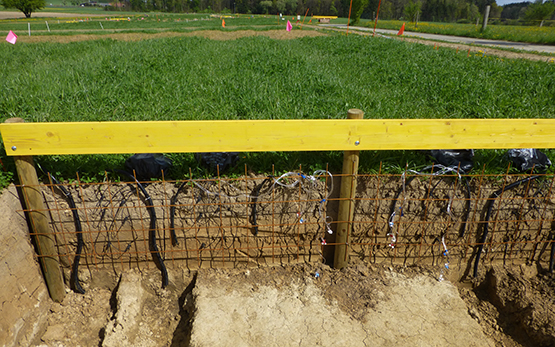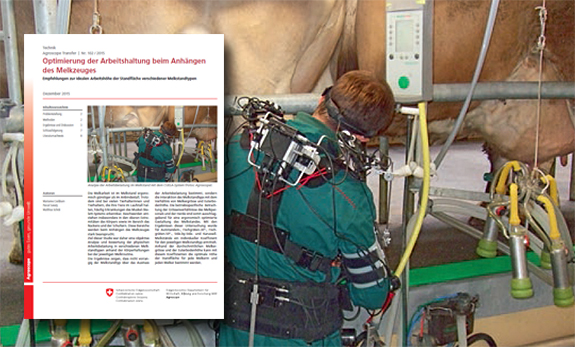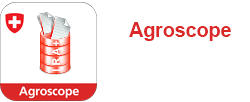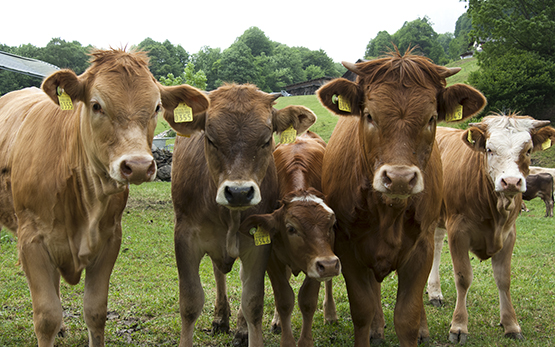Sjulgård H., Graf L.V., Colombi T., Hirte J., Keller T., Aasen H.
Earth observation reveals reduced winter wheat growth and the importance of plant available water during drought.
Biogeosciences, 22, (5), 2025, 1341-1354.
Hug A., Haab E., Hirte J., Moll-Mielewczik J., Müller M., Reininger V., Rösch A., Shavit N., Suter D., Wollmann I., Zimmermann R.
Hier wird der Boden beobachtet: Standort Duggingen.
Agroscope. 2025.
Hug A., Haab E., Hirte J., Moll-Mielewczik J., Müller M., Reininger V., Rösch A., Shavit N., Suter D., Wollmann I., Zimmermann R.
Hier wird der Boden beobachtet: Standort Binningen.
Agroscope. 2025.
Hug A., Haab E., Hirte J., Moll-Mielewczik J., Müller M., Reininger V., Rösch A., Shavit N., Suter D., Wollmann I., Zimmermann R.
Hier wird der Boden beobachtet: Standort Ebikon.
Agroscope. 2025.
Suter D., Durand-Maniclas F., Haab E., Klaudy N., Moll-Mielewczik J., Reininger V., Reusser J., Rösch A., Shavit N., Wollmann I., Zimmermann R., Hirte J.
Weiterentwicklung der Messnetze für die Nationale Bodenbeobachtung (NABO).
In: BGS Jahrestagung. 6. Februar, Ed. BGS, Wädenswil (CH). 2025.
Heinemann H., Durand-Maniclas F., Seidel F., Ciulla F., Bárcena T. G., Camenzind M., Corrado S., Csűrös Z., Czakó Z., Eylenbosch D., Ficke A., Flamm C., Herrera Mourente J. M., Horáková V., Hund A. e altri
Optimising root and grain yield through variety selection in winter wheat across a European climate gradient.
European Journal of Soil Science, 76, (2), 2025, Articolo e70077.
Hirte J., Durand-Maniclas F., Haab E., Klaudy N., Müller M., Moll-Mielewczik J., Reininger V., Rösch A., Shavit N., Suter D., Wollmann I., Zimmermann R.
Standort-Auswahl für das Bodenmonitoring 2025+.
In: AG KABO. 4. Dezember, Ed. Kanton Zürich, Fachstelle Bodenschutz, Zürich (CH). 2024.
Hirte J., Citi G., Meyer Y. L., Rauch M.
Providing the PRIF tables for digital applications: Technical report of the pilot project «WebGRUD».
Agroscope. 2024, 71 pp.
Veršulienė A., Hirte J., Ciulla F., Camenzind M., Don A., Durand-Maniclas F., Heinemann H., Herrera J. M., Hund A., Seidel F., da Silva-Lopes M., Toleikienė M., Visse-Mansiaux M., Yu K., Bender S. F.
Wheat varieties show consistent differences in root colonization by mycorrhiza across a European pedoclimatic gradient.
European Journal of Soil Science, 75, (4), 2024, 1-8.
Steinfurth K., Börjesson G., Denoroy P., Eichler-Löbermann B., Gans W., Heyn J., Hirte J., Jansen F., Koch D., Merbach I., Mollier A., Morel C., Panten K., Peiter E., Poulton P. R. e altri
Decrease in soil test phosphorus levels under omitted phosphorus fertilizer application.
Soil Use and Management, 40, (3), 2024, 1-20.
Hofer S., Hirte J., Mayer J., Jarosch K.
Soil-, management-, and climate-related drivers of yield stability in organic and conventional farming systems.
In: EJP Soil Annual Science Days. 10 June, Vilnius (LT). 2024, 1.
Frei J., Wiesenberg G.L.B., Hirte J.
The impact of climate and potassium nutrition on crop yields: Insights from a 30-year swiss long-term fertilization experiment.
Agriculture, Ecosystems & Environment, 372, 2024, 1-14.
Hofer S., Herzog F., Hirte J., Mestrot A., Oberholzer S., Kandeler E., Halswimmer H., Jarosch K.
How do trees affect soil organic carbon (SOC) stocks in a 13-years old Swiss agroforestry system?
In: Jahrestagung 2024. 21 March, Ed. BGS, SGP, SGPW, Zollikofen. 2024, 1.
Jarosch K., Hirte J., Walder F.
ARTEMIS: Agro-ecological strategies for promoting climate change Mitigation and Adaptation by enhancing soil ecosystem services and sustainable crop production.
In: EJP SOIL Annual Science Days. 12 June, Ed. Agroscope, Riga. 2023.
Higgins S., Keesstra S. D., Kadziuliene Z., Jordan-Meille L., Wall D., Trinchera A., Spiegel H., Sanden T., Baumgarten A., Jensen J. L., Hirte J., Liebisch F., Klages S., et al.
Stocktake study of current fertilisation recommendations across Europe and discussion towards a more harmonised approach.
European Journal of Soil Science, 74, (5), 2023.
Hirte J., Liebisch F.
Crop response to soil potassium under diverse pedoclimatic conditions in multiple environments: Implications for fertilization recommendations.
In: Long Term Experiments: Meeting future challenges. 22 June, Rothamsted. 2023, 1-18.
Heinemann H., Hirte J., Seidel F., Don A.
Increasing root biomass derived carbon input to agricultural soils by genotype selection: A review.
Plant and Soil, 490, 2023, 1958-30.
Steinfurth K., Holton Rubaek G., Hirte J., Buczko U.
Yield response of grass and grass-clover leys in crop rotations to phosphorus fertilization.
In: Grassland at the heart of circular and sustainable food systems. 26-30 June, Ed. European Grassland Federation, Caen (France). 2022, 731-733.
Fontana M., Hirte J., Bélanger G., Makowski D., Elfouki S., Sinaj S.
Long‑term K fertilization effects on soil available K, grain yield, and plant K critical value in winter wheat.
Nutrient Cycling in Agroecosystems, 123, 2022, 63-82.
Steinfurth K., Börjesson G., Denoroy P., Eichler-Löbermann B., Gans W., Heyn J., Hirte J., Huyghebaert B., Jouany C., Koch D., Merbach I., Mokry M., Mollier A., Morel C., Panten K. e altri
Thresholds of target phosphorus fertility classes in European fertilizer recommendations in relation to critical soil test phosphorus values derived from the analysis of 55 European long-term field experiments.
Agriculture Ecosystems and Environment, 332, (107926), 2022.









